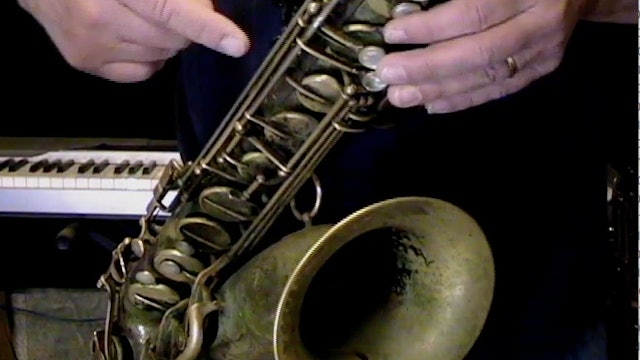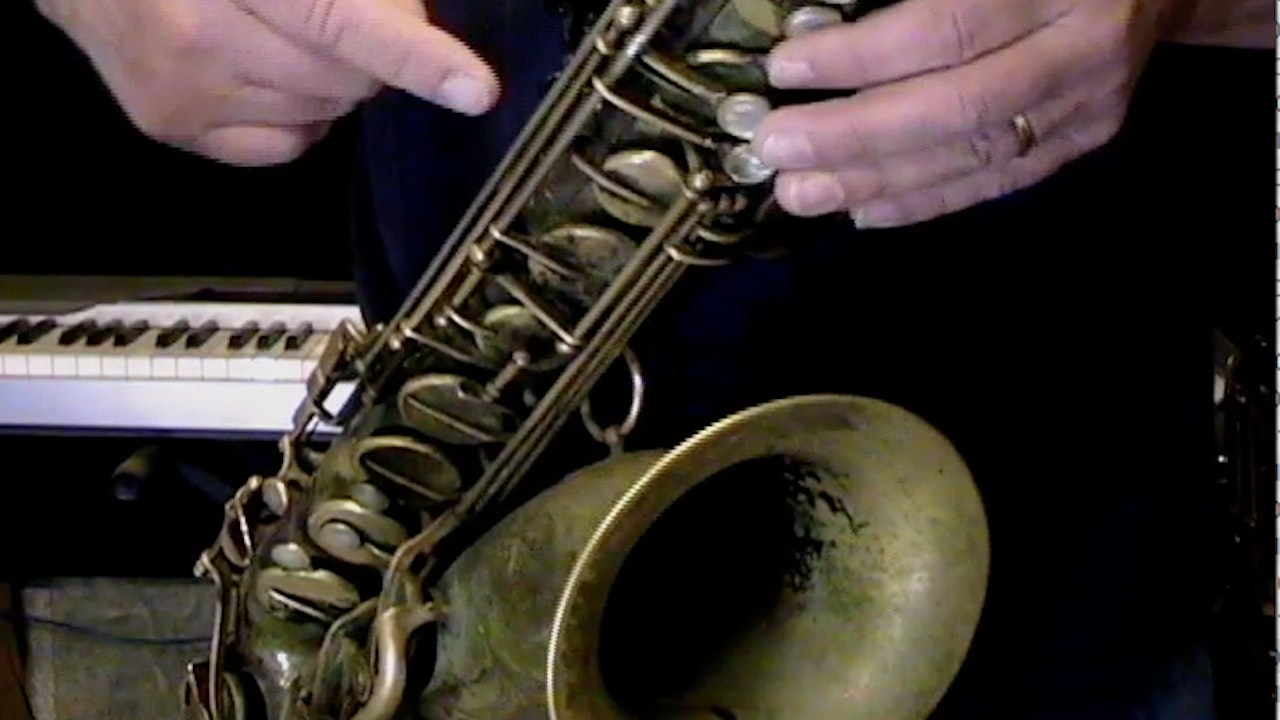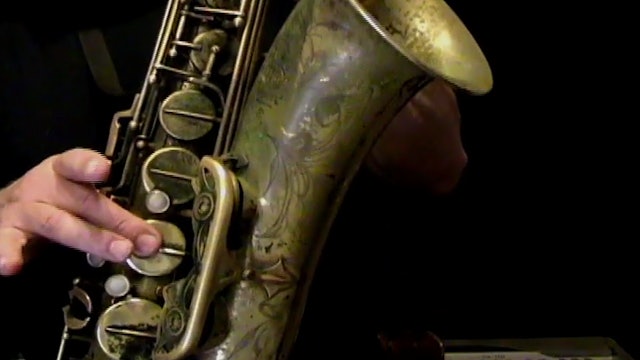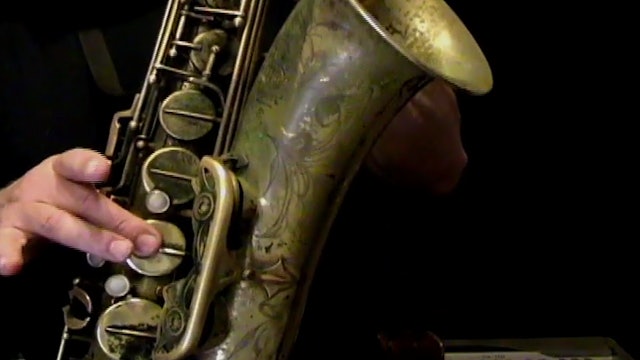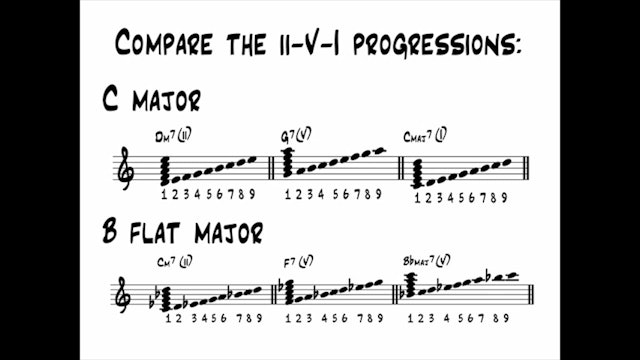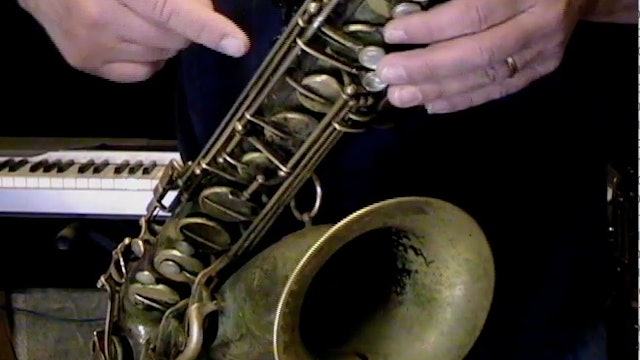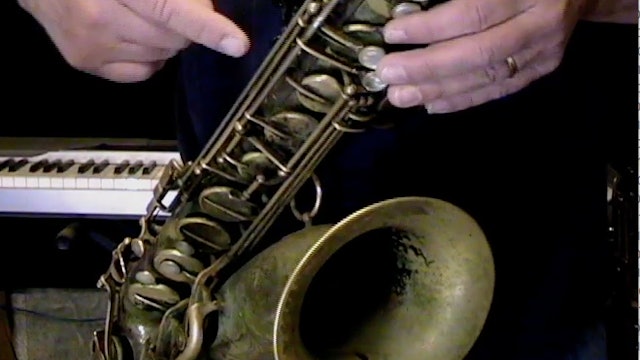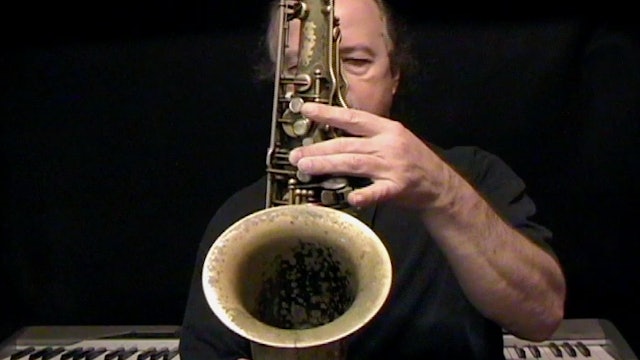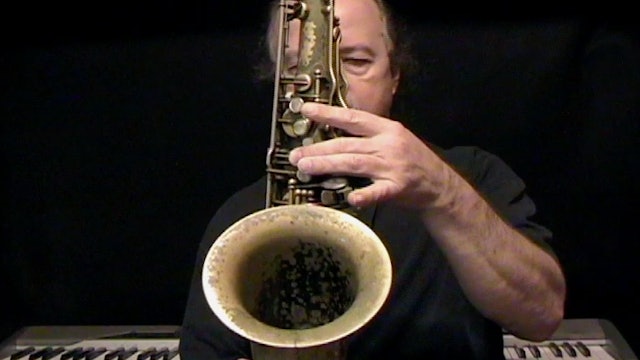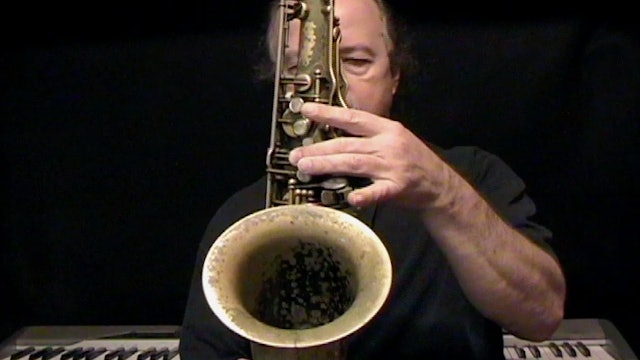Stage III Jazz Improvisation Lessons
Stage III includes are med-advanced level lessons designed to help you understand more about harmony, build your technique, and further develop your jazz phrasing skills.
We'll cover:
-more about the use of pentatonic scales in blues and funk playing.
-dominant chords and the Circle of Fourths.
-ii-V-I's and their derivation.
-a method for learning chordal arpeggios inside and out!
-the development of technique and harmony through the use of auxiliary tones.
-the various types of minor scales and their function in jazz.
-
-
Relating the Pentatonics, Part 3: Blues and the Pentatonic Scale
In this lesson, you'll learn how to use pentatonic scales for improvising on dominant chords and in the blues. We'll start with some exercises for practicing pentatonic scales in typical blues progression combinations. The lesson concludes with some "I Play-You Play" practice with a play-along tr...
-
Relating the Pentatonics, Part 4: Funk and the Pentatonic Scale
In this lesson, you'll learn how to improvise on a funk based blues groove using pentatonic scales. Emphasis is placed on interpreting and performing with the proper style using a combination of pentatonic and blues scales. We also do some "I Play-You Play" improvisation practice using a play-alo...
-
The Circle of Fourths and Dominants (Through the Keys, Part 1)
This lesson provides a method for learning the "Circle of Fourths" and for practicing concepts, phrases, and licks on dominant chords in all keys using the "Cycle of Dominants."
An understanding of major scales is needed to get the most from this lesson. -
ii-V-I's; The Modal View (Through the Keys, Part 2)
This lesson approaches the major ii-V-I chord progression through the use of dorian, mixolydian, and major scales. Examples and exercises are provided to help you learn to play concepts, phrases, and licks over ii-V-I progressions in all keys.
An understanding of major scales is needed to get th... -
The Arpeggio Circle, Part 1
This lesson teaches a technique using circle patterns for practicing & internalizing the arpeggios associated with the chord changes for most standard tunes. The chord changes from the first eight-bars of the standard, "You Stepped Out of a Dream," are used as an example.
-
The Arpeggio Circle, Part 2
This lesson further explores the circle pattern technique explored in Part 1. In this lesson you will learn how to practice and incorporate arpeggio inversions in your improvisation. The complete chord progression from the standard, "You Stepped Out of a Dream," is used in the exercises.
-
Technique Through Concepts, Part 1: Surround Tones
This lesson will help you develop a strategy for incorporating technique and harmony building surround tone patterns in your practice. The patterns in this lesson are based on the concept of enclosing the tones found in major triads. Through a series of easy-to-follow steps, you'll learn how to u...
-
From Concept to Improv Phrasing Demonstration
This video is a phrasing demonstration of the concepts covered in Technique Through Concepts: From Concept to Improv
-
Technique Through Concepts, Part 2: From Concept to Improv
This lesson will teach you how to incorporate the concepts you practice into your improvised solos. Surround tone patterns learned in part 1 of this lesson series are used in the exercises and examples along with the chord changes to the standard, "Fly Me to the Moon."
-
Minor to Minor: Understanding the Scales
There are so many different types of minor scales that it's easy to be confused regarding which ones to learn, how to construct them, and how to practice and use them. In this lesson, we'll sort out the confusion and get you on track to understanding and practicing the most common types of minor ...
-
Relating the Pentatonics, Part 3.zip
3.85 MB
-
Relating the Pentatonics, Part 4.zip
3.69 MB
-
Through the Keys - The Circle of Fourths and Dominants.pdf
185 KB
-
The Arpeggio Circle Part 1.zip
172 KB
-
The Arpeggio Circle Part 2.zip
123 KB
-
Technique- Surround Tone Patterns.pdf
46.3 KB
-
Technique; From Concept to Improv.pdf
139 KB
